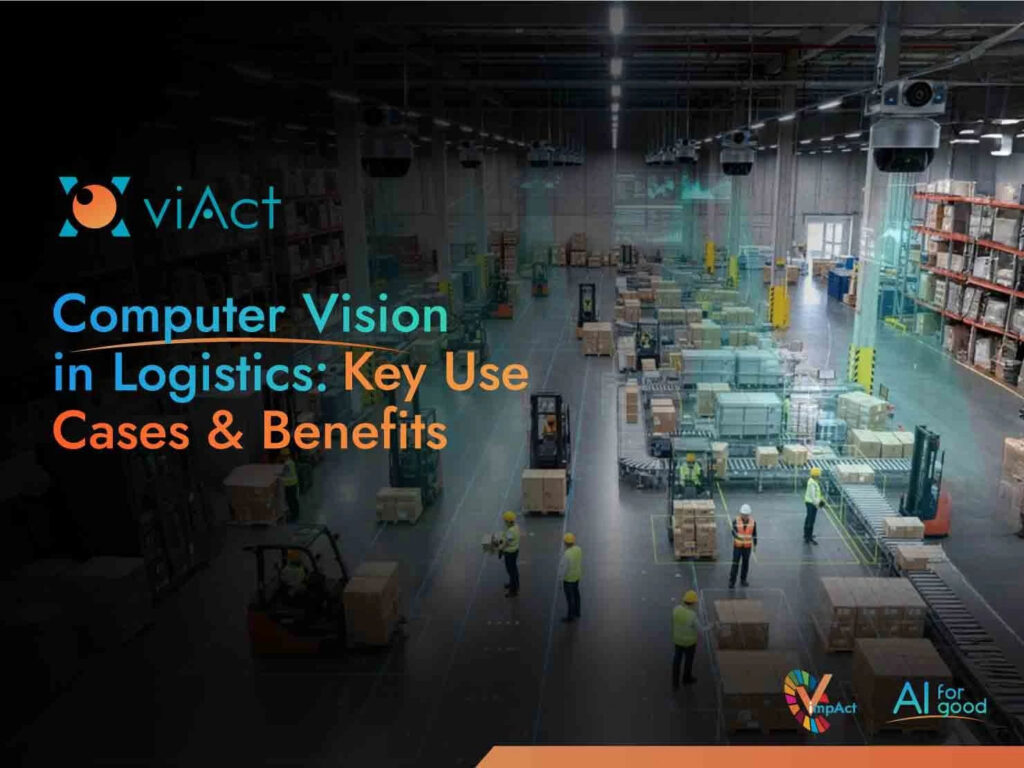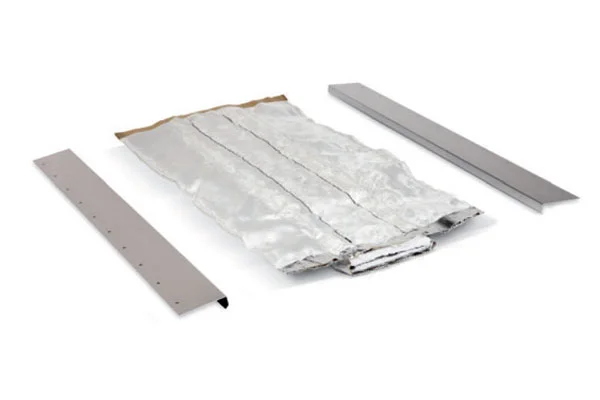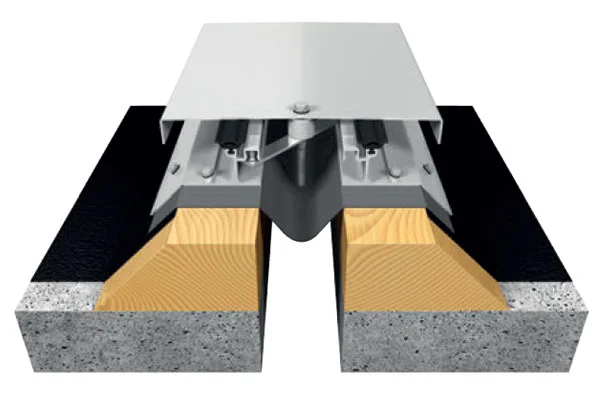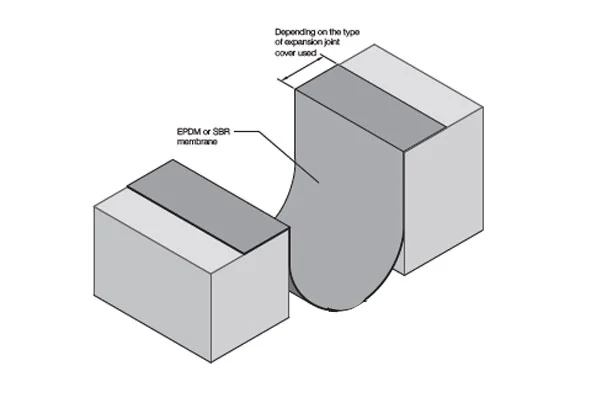
Imagine walking through a sprawling logistics hub. Forklifts glide between towering racks stacked with pallets, conveyor belts run as thousands of packages move along predetermined paths, and workers navigate the floor with precision, managing goods at a breakneck pace.
Behind the scenes, every second counts. A misplaced item, a damaged package, or a delayed shipment can distort the entire supply chain, causing inefficiencies, losses, and dissatisfied customers.
Under traditional monitoring, errors go unnoticed, accidents happen, and opportunities to optimize processes are often missed.
This is where computer vision in logistics comes in. By giving machines the ability to “see” and interpret the world around them, logistics operations gain real-time intelligence that transforms every aspect of the supply chain.
In this blog, we’ll explore the key applications of vision AI systems in logistics, showing how they solve real-world challenges and drive efficiency across the supply chain.
How Computer Vision is Transforming Warehouse Operations
Warehouses are the backbone of logistics, yet they are often bottlenecks due to manual tracking, misplacement of goods, and inefficient space utilization. Smart vision changes the game by allowing systems to “see” the inventory in real time.
Today, with AI, on a warehouse floor, every shelf, every bin, and every item is constantly monitored. AI CCTVs capture the presence, position, and orientation of goods. AI algorithms analyze this data to identify misplaced items, low-stock products, and overstocked areas.
For example, Amazon uses an intelligent robotic system that automatically detects, selects, and handles every product in inventory. This allowed them to reach a record of packaging 13 million items per day. DHL actively uses computer vision and mentions how it would be the standard way of operating in the logistics sector in the future.
Logistics monitoring systems ensure the warehouse operates at maximum efficiency. How?
Let’s explore in detail.
Key Use Cases of Computer Vision in Logistics
The industry deals with a constant flow of objects, people, and machinery—all of which generate rich visual data. By translating this visual information into structured insights, AI enables smarter decisions across operations, from warehousing to last-mile delivery.
Here are some key use cases in logistics where computer vision plays an important role in 2025.
1. Warehouse Intelligence & Inventory Oversight
Warehouses are dynamic spaces where every second and square meter counts. Manual stock verification or barcode scanning can’t provide the speed or visibility that modern operations demand.
With AI for warehouse management in the existing CCTVs on site, monitoring of every rack and pallet happens in real time. Object detection algorithms identify goods, while 3D mapping systems analyze storage patterns and available space. When stock levels drop or items are misplaced, the system triggers an alert instantly.
Suppose in a large logistics park in Dubai, hundreds of pallets arrive every hour from multiple suppliers. Overhead cameras automatically identify each pallet’s dimensions, calculate its cubic volume, and update available storage space on a centralised dashboard.
Supervisors gain full visibility into warehouse occupancy and can even simulate optimal layout arrangements to enhance throughput. In effect, the warehouse becomes a living system that self-monitors, adapting to fluctuations in demand and space utilization.
2. Automated Quality Inspection
Quality control is vital in logistics — damaged or mislabelled goods can disrupt entire supply chains. Computer vision performs these inspections continuously and far more accurately than manual checks.
Using convolutional neural networks (CNNs) and pattern recognition, systems capture product surfaces from multiple angles and flag anomalies such as tears, dents, leaks, or label mismatches. Defect detection networks compare every product against predefined quality templates, filtering out non-compliant packages before they move downstream.
This not only improves accuracy but also drastically reduces return rates and customer complaints. Logistics managers can view live dashboards displaying defect frequencies and origins, allowing for faster corrective action.
3. Smart Sorting & Routing Automation
In high-volume logistics hubs, sorting parcels correctly and efficiently is a logistical art form. Smart visual monitoring simplifies this process by allowing automated sorters and conveyors to recognize, classify, and route packages with precision.
Vision-based cameras capture images of every package passing through the system. Dimensional analysis algorithms instantly measure size, shape, and weight, while object tracking models guide items to their correct destinations. The result is a fully autonomous routing mechanism that ensures faster dispatch and reduced manual handling.
For instance, in an e-commerce fulfillment center, thousands of orders arrive with handwritten or partially torn labels. AI-powered systems identify the text, cross-verify it with digital records, and instantly route packages to the correct conveyors. During peak hours, AI mapping automatically adjusts sorting priorities to avoid pileups and bottlenecks.
Beyond efficiency, the data collected helps optimize lane utilization, anticipate congestion, and balance workload across multiple facilities.
4. Worker Safety & Hazard Prevention
In logistics operations, safety incidents often occur due to fatigue, non-compliance, or simple oversight. Vision technology enables continuous safety monitoring without intruding on productivity.
Behavior recognition models detect unsafe acts — like a worker entering a restricted zone, operating machinery incorrectly, or failing to wear safety gear. If two forklifts approach within an unsafe distance, the system instantly sends an alert to the EHS teams and slows one vehicle through integrated IoT controls.
The advanced vision-powered monitoring allows PPE detection based on zone or task specific requirements. For instance, in a logistics hub, workers handling heavy packages on conveyors may be required to wear steel-toed boots and gloves, while those operating forklifts in the same facility must also wear high-visibility vests and helmets.
The AI system ensures that each worker complies with the PPE requirements relevant to their current task and area. If any anomaly is detected, alerts are instantly sent to supervisors on their mobile devices. Over time, EHS analytics highlight patterns — identifying high-risk zones, times, or behaviors — allowing proactive interventions.
|
Quick Case Insight: At a major logistics hub in Singapore, recurring incidents of inventory discrepancies and cargo losses had become a persistent concern. Traditional surveillance methods left blind spots during shift transitions, resulting in delayed responses and incomplete visibility across storage zones. To address these challenges, the management implemented viAct AI-powered monitoring system, driven by advanced vision intelligence technology for proactive theft detection and operational oversight. The results were transformative — the hub saved over 2,000 operational hours annually, reduced insurance premiums by 12% due to fewer claims, and achieved a 15% increase in overall profitability through improved accuracy and asset protection. 👉 Read the full story here: https://www.viact.ai/post/warehouse-theft-prevented-singapore-logistics-hub-secures-cargo-with-ai-monitoring |
5. Space Utilization & Cargo Optimization
Empty space equals wasted efficiency in logistics. Whether it’s a half-loaded truck or an underutilized warehouse section, improper capacity management costs time and money.
Computer vision uses volumetric measurement algorithms to assess the dimensions and weight distribution of goods. Systems can determine the best way to stack or load items to optimize vehicle space while maintaining balance and safety.
For warehouses, spatial analytics help visualize available storage in 3D, highlighting free zones and recommending ideal item placement. Logistics managers can forecast storage demands and dynamically assign space — resulting in higher utilization rates and lower handling costs.
6. Equipment Condition Monitoring
Forklifts, conveyor belts, and cranes are the lifelines of any logistics operation. Their failure can halt processes entirely. Vision-based monitoring systems continuously observe equipment for early signs of malfunction.
Using thermal imaging, visual anomaly detection, and motion pattern analysis, these systems identify irregularities such as belt misalignment, oil leaks, or overheating motors. Combined with predictive maintenance algorithms, the data enables maintenance teams to act before a breakdown occurs.
This not only prevents downtime but also extends the lifespan of assets — an essential advantage in capital-intensive logistics environments.
7. Real-Time Tracking & Traceability
Tracking shipments accurately across large networks is a persistent challenge. Manual documentation is slow and error-prone, especially when containers are mislabelled or obstructed.
Automated visual inspection equipped with Optical Character Recognition (OCR) automatically reads barcodes, serial numbers, and even container IDs, regardless of angle or lighting. Multi-camera tracking networks monitor movement across checkpoints, ensuring every shipment’s location is known at all times.
This seamless traceability improves transparency, reduces misplaced inventory, and strengthens customer confidence through accurate delivery updates.
8. Facility Security & Risk Management
Logistics facilities often handle high-value goods and require robust protection. Computer vision enhances security by monitoring movement across restricted zones, perimeters, and parking lots.
Intrusion detection systems identify unauthorized entries, while behavioral analytics differentiate between normal and suspicious activities—like loitering near sensitive areas or unusual after-hours movement. Real-time alerts help security teams intervene quickly, minimizing losses and ensuring compliance with security standards.
Suppose in a night-shift cargo depot, several intrusion alerts are reported across storage areas. Here, AI surveillance systems don’t just monitor movements — they differentiate between authorized night crews and unknown individuals based on posture, route, and timing. Simultaneously, Automatic Number Plate Recognition (ANPR) scans are installed at entry and exit gates to verify the license plates of trucks and service vehicles entering the premises.
Over time, aggregated visual data helps refine risk models and improve incident response planning.
9. Data-Driven Decision Support
The biggest advantage of vision-based surveillance lies in the data it generates. Each camera or sensor acts as a data source, feeding information into centralized dashboards.
Through visual analytics platforms, logistics managers gain real-time insights into warehouse occupancy, equipment utilization, and workflow efficiency. By integrating historical patterns, AI models can forecast peak periods, recommend staff deployment, or identify bottlenecks before they disrupt operations.
The result is a shift from reactive management to predictive operations — where every decision is backed by visual evidence and data-driven foresight.
Bringing It All Together: The Future of Vision-Driven Logistics
Logistics monitoring system based on computer vision is not just digitizing — it’s intelligently connecting every process, from storage to shipment. As global trade accelerates, logistics leaders are embracing AI vision to achieve what manual oversight never could: precision, predictability, and proactive control.
When combined with technologies like IoT sensors, digital twins, and AI video analytics, it becomes the foundation of a fully autonomous logistics ecosystem — one that learns, adapts, and continuously optimizes itself.
The future of logistics isn’t just automated; it’s vision-enabled, data-driven, and insight-led — where every camera becomes an intelligent eye on efficiency, safety, and performance.
1. How expensive is it to implement intelligent vision system in a logistics facility?
The cost of deploying computer vision in logistics largely depends on factors like the size of the facility, the number of cameras or sensors required, and the depth of AI integration. However, the long-term ROI outweighs the initial investment — both in cost savings and safety improvements.
Most clients report full ROI recovery within 8–12 months due to operational efficiency and manpower optimization.
2. Is computer vision scalable across multiple warehouses?
Absolutely. One of the greatest strengths of AI vision systems like viAct is scalability. Once a model is trained for one site, it can be replicated and fine-tuned across multiple facilities with minimal effort.
-
Cloud-based dashboards offer centralized visibility across all hubs as well as on-prem deployment options.
-
Site-level customization allows for different safety protocols or storage layouts.
-
AI learns continuously — so the system gets smarter over time as it processes more data.
For global operators, computer vision becomes a network-wide intelligence layer, linking safety, operations, and compliance across countries.
3. How easy is it for EHS and logistics teams to use a dashboard?
Modern AI vision platforms like viAct are built for operational teams — not just data scientists. The dashboards use intuitive visual interfaces that display alerts, analytics, and compliance metrics in real time.
“Even our floor supervisors could understand it within a day. The interface shows what’s happening on the floor — live — and sends alerts to our phones instantly.” notes a Safety Lead from a Hong Kong distribution center.
4. How secure is the data collected through AI vision systems?
Data privacy is a top priority. All viAct deployments follow GDPR, ISO 27001, and local data protection standards, ensuring that visual data remains secure and anonymized.
Security measures include:
-
Encrypted data transmission and storage
-
On-premise or private cloud hosting options
-
Automatic face and license plate anonymization
-
Role-based access control for users
5. Can AI-based vision system detect multiple hazards simultaneously?
Yes. Unlike traditional cameras that just record, AI-powered vision can multi-task in real time. For example, a single camera feed can simultaneously track:
-
Forklift proximity to workers
-
Zone-specific PPE compliance
-
Intrusion in restricted zones
-
Cargo stacking stability
This helps reduce blind spots and minimizes the number of cameras needed — optimizing costs and improving safety visibility.
Considering to deploy Computer Vision in Logistics?








